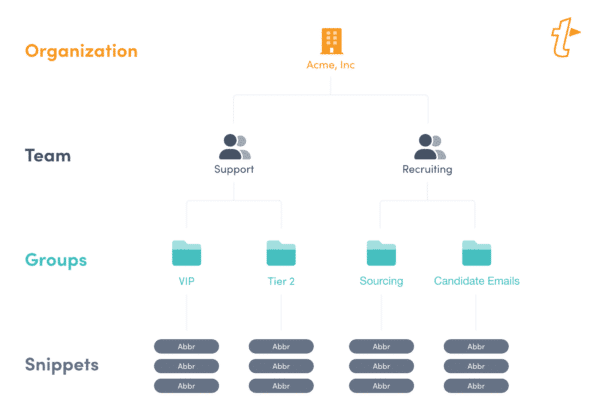Employers know that attracting and retaining quality employees is paramount. Part of what helps an employer to achieve these goals is company benefits that are outside of the pay scale. There was a time when an employee was expected to provide many of their own tools, and to largely fend for themselves. Today, that landscape has changed.
The range of benefits that employers offer is expanding at a rate that we’ve never seen before. Mandatory vacation days, education budgets, extensive software catalogs, and career development are only a few of the ways that employers are vying to keep employees happy.
Oddly enough, though companies spend a lot of time and effort making these benefits available, they don’t do a great job promoting them. It’s not uncommon to hear about employees who only learn about benefits after they’ve already paid for something out of pocket. We wanted to take a closer look at some employer benefits and see how they can affect life inside the company, while also encouraging you to investigate what’s available.
Explore the Software Catalog
This has been a topic of significant conversation over the past decade or so. There was a time when companies needed to license a copy of a productivity suite for each individual employee. The associated, individual costs could often reach into the thousands of dollars. As the shift to more cloud-based services has taken hold, costs have reduced dramatically. This has freed up money for companies to expand their catalogs, which has also gotten easier to handle as other software has gone to service-based pricing.

For many companies, investing a small amount of money into an app catalog platform can have huge returns. Not only does it drive awareness of the tools that are available, it also helps to fast-track employee onboarding. Many platforms even allow the administrator to list prerequisite software and steps that an employee will need. This cuts down on the back and forth that’s often required to get an employee using a new application.
The Advantage of Teams
One of the big advantages of the cloud-based shift has come in team-based subscriptions. For most software, team-based subscriptions do more than allow for singular billing for multiple accounts. Most times, teams subscriptions will also afford a company the opportunity to share work across an organization directly inside the application.
We are big fans of team-based software and make use of it daily. For example, we create every image that you see on our blog posts inside of Canva. Our TextExpander team account lets us share individual images, entire projects, and our company branding all in one place.
We see TextExpander for Teams as a chance to eat our own dog food, so to speak. We often hear from individual users who want to use TextExpander at their job, but they don’t know that their company already has a Teams subscription. So the first thing you’ll want to do is to check your catalog and see what’s available to you.
Once you’re set up on TextExpander for Teams, that’s when the benefits really shine. You might not have to concern yourself with simplified billing, but there is a wealth of features available to Teams subscribers. It all starts with setting up an Organization and deciding who needs access to what Team.
While we get feedback on our Teams implementation a lot, one part we hear about frequently is Teams versus Groups. For example, your Support team might have different Tiers as groups, and then within each group you’d have snippets that apply to them. This is especially handy when you’re using different levels of suggestions or solutions.

Sales teams love TextExpander for Teams because they can be in the same Organization as Marketing. Marketing will tweak and perfect messages, then add those messages to Snippet Groups they share with Sales. Best of all, syncing messages and images is instant, and works across any platform.
Once you’ve gotten your Organization structure handled, Permissions are your next stop. TextExpander for Teams bakes in Permissions at the Organization level, but then each member can have permissions assigned to them to create, share, and expand snippets.
Exploring your company’s software catalog is not only a great way to boost your own productivity, it’s also making good use of resources. Companies put these benefits in place not only to attract and retain talent, but also to make their work time more productive. When you’re using the tools that you’re given, you’re doing yourself a favor as well.
Expanding Education
Another area where we’re seeing employers offer additional perks is in educational opportunities. From tuition reimbursement to career development, when companies invest in their employees, they’re often finding that the employees invest in the company.
It should come as no surprise that employee turnover is a huge problem for many companies. As many as 1 in 3 people leave their job within the first year, with 22 percent leaving within the first six weeks. But 70 percent of people say that training and development opportunities influence their decision to stay with a company.
You might think, given these numbers, that employees would be clamoring for educational opportunities. Sadly, fewer than 5 percent of employees are taking advantage of them. While there are many reasons behind this low number, a significant amount of employees report not knowing about the benefits that are available to them.
Employers have more than employee attraction and retention to gain from educational programs. There are also monetary advantages. According to the IRS, employers in the United States can provide up to $5,250 per employee toward tuition, tax-free. This is akin to giving each employee a significant raise with no taxes required. On top of that, the employer can claim a business deduction for educational employee benefits paid.
Time Off Means Time Retained
It wasn’t long ago when many people considered paid time off (PTO) to be a perk. If you earned a few days each year, you were in good shape. But as we have discovered more about the importance of unplugging and recharging, employers are getting on board with enhanced PTO policies.
The first shift was toward more earned days off, which then went to unlimited days off. But companies found that their employees were nervous about appearing “lazy” or otherwise not engaged, so they hesitated to take the time off that they needed. The latest shift is toward mandatory vacation. Companies are requiring their employees to take a certain amount of time off each quarter, or each year.

Beyond PTO, we’re now seeing a shift toward paid family leave (PFL). The older cousin of PFL is the Family and Medical Leave Act (FMLA) which was a federal act passed in 1993. FMLA allows for 12 weeks of unpaid leave in a 12 month period to attend to self or family requirements. PFL, which was first passed in California in 2002, allows for up to 6 weeks of paid leave in a 12 month period. PFL is also not subject to employer headcount like FMLA.
While PFL is law in California, companies in other states are following suit, and even going beyond what the law requires. For example, it’s becoming more common for fathers to have paternity leave after the birth of a child, or for a company to grant PFL after an adoption.
As families and times have changed, so too have company policies. Make sure that you’re taking advantage of the time that your employer affords you. Chances are good that doing so will have a positive outcome on both your happiness and longevity in your role.
What surprises have you found when you dug into company benefits? Did you run across a piece of software or a pleasant surprise? We’d love to hear about them in the comments.

